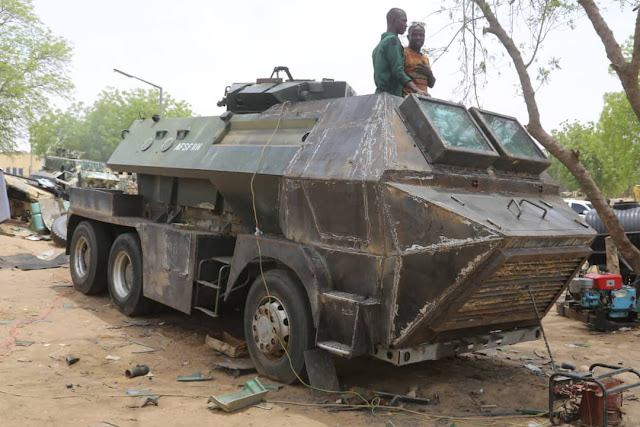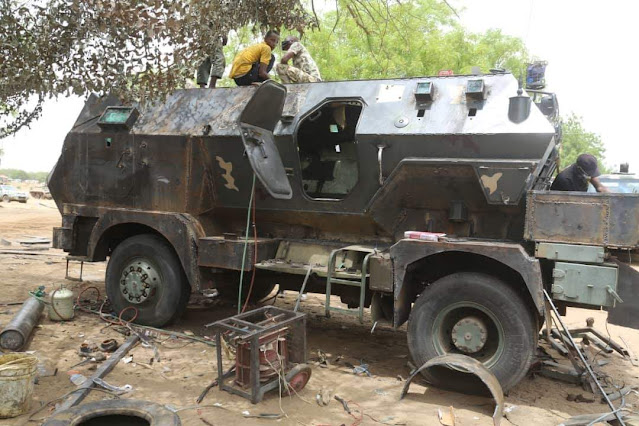As two industry teams develop prototypes that will go head-to-head in a competition for the Army’s Future Attack Reconnaissance Aircraft, both teams will be working with Picatinny Arsenal engineers to outfit those aircraft with 20mm Gatling guns.
The Future Vertical Lift (FVL) Cross Functional Team has accelerated the FARA to return a dedicated aerial reconnaissance capability to Army Aviation, filling the void left by the retired OH-58 Kiowa scout helicopter.
To meet their aggressive timetable, the FARA Competitive Prototype (FARA CP) Program is using an Other Transaction Authority for Prototype arrangement as part of the Army’s strategy. Under FARA CP, Bell and Lockheed Martin will design, build, and test two demonstrator aircraft competitively before the Army selects one aircraft in 2024.
The Advanced Rotorcraft Armament and Protection System (ARAPS) program team at the U.S. Army Combat Capabilities Development Center (CCDC) Armaments Center will prototype and demonstrate the Gatling gun, known as the XM915, for transition and integration into the Bell and Lockheed Martin FARA CP demonstrator aircraft.
The XM915 under development is a 20mm, three-barrel Gatling weapon capable of firing up to 1500 shots per minute while weighing under 115 lbs. The weapon will be mounted in a turreted cradle allowing the weapon to be aimed independent of the aircraft’s direction of travel. Ammunition will be fed into the weapon by a linkless carrier drive system that accomplishes the same task as steel-belted ammunition while saving weight and increasing system reliability.
FVL is one of the U.S. Army's top modernization priorities that also includes Long Range Precision Fires, Next Generation Combat Vehicles, Network, Air and Missile Defense, and others.
FVL platforms and technologies, including the FARA, increase the maneuverability, endurance, lethality, and survivability of Army aircraft – broadening their operational reach and effectiveness against near-peer competitors.
FARA CP will feature a lightweight primary armament system with rapid-fire capability to engage targets of opportunity and provide defensive fires without excessive payload and impulse considerations to the airframe.
U.S. Army modernization officials have asked aviation firms for ideas on equipping the service's future attack reconnaissance aircraft with mission systems.
The Army modernization strategy, launched in 2017, was put into play with the goal of replacing most major combat platforms beginning in 2028.
As part of the Gatling gun development, the CCDC Armaments Center performed analysis to frame the armament system trade space. Trade space analysis identifies critical components and capabilities, explores the relationships between them, and quantifies those relationships for informed decision making. Engineers explored combinations of weapon and ammunition, balancing adversary target effects and total armament system weight, to create metrics of performance. These metrics were used to narrow the field of weapons that fit the trade space.
For its reconnaissance missions, the FARA aircraft prioritizes lightweight platform and mission system technologies for increased aircraft mobility and survivability.
To meet the FARA CP schedule, Armaments Center engineers leveraged a low Technology Readiness Level (TRL) 20mm Gatling weapon to mature as the point of entrance for the FARA CP weapon. The ARAPS program will prototype and demonstrate to TRL 6 the XM915, a 20mm Gatling weapon for transition and integration into the Bell and Lockheed Martin FARA CP demonstrator aircrafts.
“Thousands of modeling and simulation runs played weapon configurations on a representative aircraft in combat-derived scenarios to establish trends,” said Daniel DiMartino, acting FVL Science and Technology Lead at the Armaments Center. “These trends consider the aircraft elevation and position, weapon rate of fire and accuracy, ammunition characteristics, and target type to provide engineering data that informs product development.”
Engineers have found that a 20mm Gatling weapon provides sufficient range and lethality while minimizing system weight and forces applied to the FARA airframe.
The Armaments Center is performing engineering activities to design, model, test and evaluate the XM915 weapon. Engineers are analyzing complete system effectiveness of the XM915 in a lab environment to determine overall performance against a variety of target sets. These lab analyses will transition to flight testing on the forthcoming FARA platform.
“We have been able to accomplish a significant amount of engineering development in the accelerated timeline to produce the XM915,” said Michael Colonnello, acting FVL Acquisition Lead at the Armaments Center. “These next few years of development and testing are critical to push technology to the warfighter.”
The XM915 is on schedule for live fire performance and reliability testing in 2021 to meet TRL 6 criteria, meaning the weapon has reached a level of maturity to operate in a relevant environment. The XM915 will be provided as Government Furnished Equipment to Bell and Lockheed Martin for integration prior to 2023 flight testing and demonstrations. Armaments Center is currently supporting the FARA CP program to facilitate XM915 integration to each demonstrator aircraft and ensure the Government receives best value through the prototype acquisition process.
































